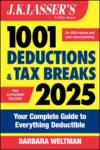Slightly Higher High-Low Method Reimbursement Rates Effective October 1
Employers that want to use a per diem rate to reimburse their employees’ lodging, meals, and incidental expenses on business trips within the continental U.S. (CONUS) can use either the IRS’ high-low method or the reimbursement rate provided by the federal government to federal employees on official travel. The high-low method can be easier for employers to use than the federal travel rates since there are only two rates involved, whereas the federal per diem rates vary on a locality-by-locality basis and may vary monthly for a particular area.
For the federal government’s new fiscal year beginning October 1, 2017, and ending September 30, 2018, the standard federal per diem rate is $144, of which $93 is for lodging and $51 for meals and incidental expenses (M&IE). This is just above the $142 per diem rate ($91 for lodging, $51 for meals and incidental expenses (M&IE)) that applied for the prior fiscal year ending September 30, 2017. Although most areas in CONUS are covered by the new federal standard rate of $142, approximately 330 areas have per diem rates higher than $142. The federal travel rates, set by the General Services Administration, are available at www.gsa.gov.
The IRS has also announced higher rates under its high-low method for employee travel from October 1, 2017, through September 30, 2018 (Notice 2017-54). If an employer uses these rates, travel costs are considered substantiated (no receipts need to be provided), so long as the employee is not related to the employer. However, employees must still substantiate for the employer the date, destination, and business purpose of the travel. For designated high-cost areas within CONUS, the per diem rate effective October 1 is $284 per day, up from $282 per day in the prior fiscal year (ending
September 30). For all other CONUS areas, the so-called low-cost rate is $191 per day, up from $189 in the prior fiscal year. The portion of the $284 high-cost area rate considered to be for meals is $68, while $57 of the $191 low-cost area rate is treated as paid for meals; the $68/$57 meal amounts are unchanged. Employers may deduct 50% of the meals portion.
An employer can use the new high-low rates and localities (see below) for the last three months of 2017 only if the high-low method was used to reimburse employees for business trips in the first nine months of the year. Employers who used the pre-October high-low rates and high-cost localities can continue to do so for the last three months of 2016 or may switch to the new rules, but the same set of rules (old or new) must be used consistently for all employees who are being reimbursed under the high-low method.
Changes in high-cost areas effective October 1. To be considered a “high-cost” area eligible for the $284 rate, an area must have a federal per diem rate of at least $238. Many of the designated areas are high cost for the entire fiscal year while others are high cost only during certain months. The list of qualifying areas is in Notice 2017-54, which indicates if an area qualifies for only part of the year.
The following localities have been added to the list of high-cost localities: Oakland, CA; Lewes, DE; Fort Myers, FL; Hyannis, MA, Petoskey, MI; Portland, OR; and Vancouver, WA.
Four areas have been removed from the list of high-cost localities: Sedona, AZ; Los Angeles, CA; Vero Beach, FL; and Kill Devil, NC.
For the following areas, the part of the year for which the high-cost designation applies has changed: Aspen, Denver/Aurora, Telluride and Vail, CO; Bar Harbor, ME; Ocean City, MD; Nantucket, MA; Philadelphia, PA; Jamestown/Middletown/Newport, RI; and Jackson/Pinedale, WY.
Self-employed individual’s M& I E. Self-employed individuals cannot use the high-low substantiation method to figure their business travel costs. They must keep records of costs to deduct their actual meal expenses, or they can use the standard IRS meal per diem allowance, which depends on the federal M&IE for the particular locality of travel. For the fiscal year beginning October 1, 2017, there are six tiers to the federal M&IE, and they are unchanged from the prior fiscal year. The standard M&IE rate is $51, or higher rates of $54, $59, $64, $69, or $74 may apply. For each locality, the same federal M&IE applies for the whole fiscal year, and thus the same standard IRS meal allowance also applies. The federal M&IE rates are shown at www.gsa.gov. There is no standard IRS rate for lodging costs. Self-employed individuals must substantiate their lodging expenses by receipts or similar evidence.
Flat M&IE rate for transportation industry workers. Employees and self-employed individuals in the transportation industry, such as interstate truckers/bus drivers and pilots subject to the Department of Transportation limits on hours of service, can use a flat rate to figure their deduction for unreimbursed meals and incidental expenses instead of applying the M&IE for a specific locality. The flat rate for the period beginning October 1, 2017, and ending September 30, 2018, is $63 per day in CONUS and $68 per day outside the continental U.S. (OCONUS), the same as in the prior fiscal year. Employers and self-employed individuals can deduct 80% of the flat rate for transportation workers.
Nonrecourse financing
Debt on which a person is not personally liable. In case of nonpayment, the creditor must foreclose on property securing the debt. At-risk rules generally bar losses where there is nonrecourse financing, but an exception applies to certain nonrecourse financing for real estate.



